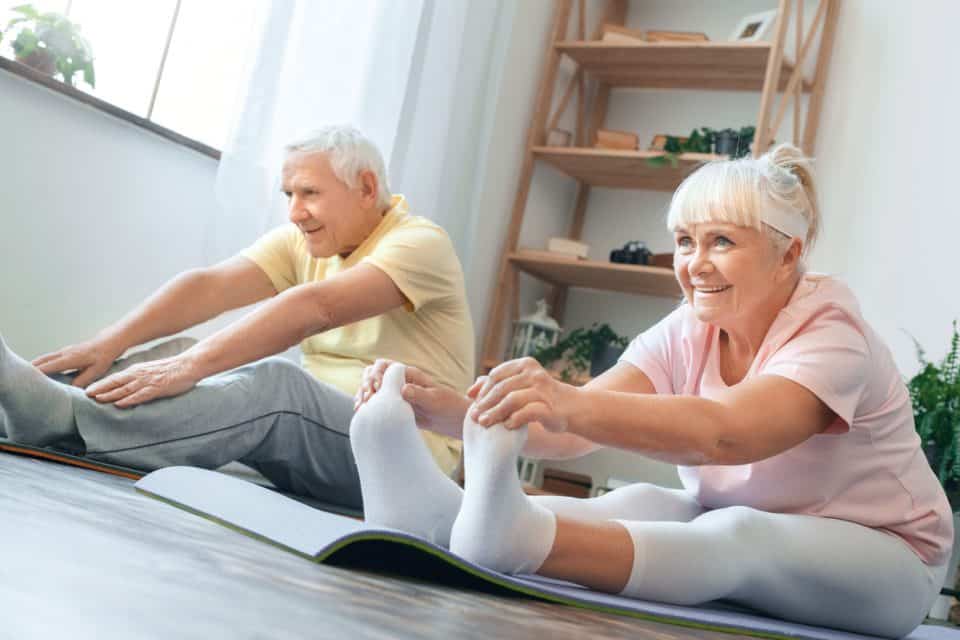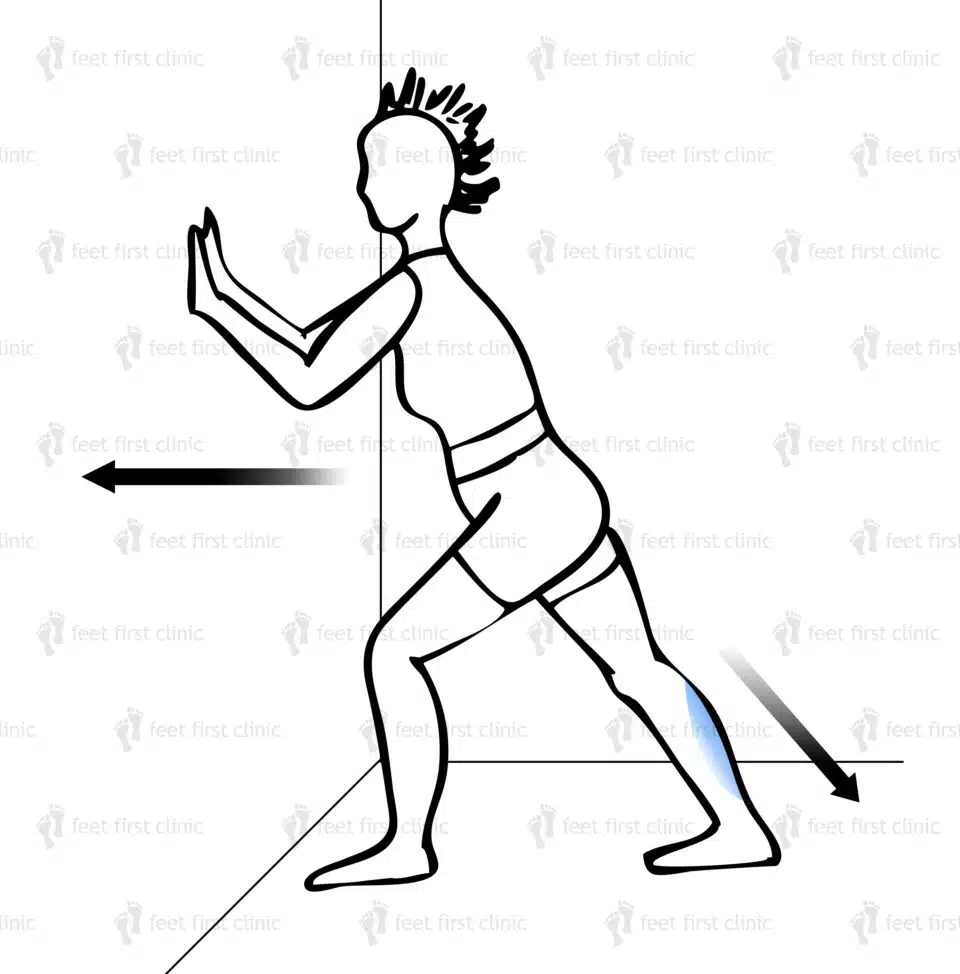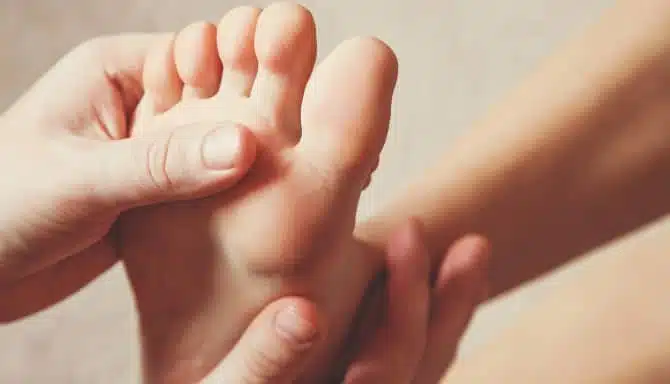We’re counting down to Feet First Clinic’s 12 year anniversary coming up on September 1st. Over the past 12 years, our chiropodists have been treating all kinds of foot pain. Our feet do a lot for us, yet they are often overworked and overlooked. One of the best ways to help them out is to do stretches and strengthening exercises for them. By doing conditioning exercises for our feet, legs (and pretty much our whole lower body), it gives our feet the strength to keep us moving. This ultimately reduces (and can even prevent!) foot pain. So, in honour of our 12th anniversary, we’ve rounded up our top 12 exercises for happy, strong and healthy feet!
Here at Feet First Clinic, we’re super passionate about stretching and exercising for preventing and treating foot pain. So much so that we had a stretching series earlier this year on Instagram, and set up a Stretching Pinterest Board. On Pinterest board, you’ll find all the video demonstrations from our stretching series, as well as infographics demonstrating top-notch conditioning exercises for different parts of the body. It’s a great mobile-friendly on-the-go resource to help you remember which exercises to do, and how to do them. Best of all, we specifically compiled exercises that are quick, convenient and accessible.
In this article, we’ll showcase three exercises for each of the following areas:
- Toes
- Arches
- Ankles
- Legs (overall exercises that are great for your mobility!)
These exercises all help improve function and mobility, and are good for everyone – whether or not you have foot pain. You can also perform them throughout your day – whether you’re at work or home, sitting, standing or lying down. Taking the time to focus on these movements and adding them to your routine for consistency is excellent. And if you want to up the ante, we also suggested some equipment you could use to increase the intensity.
Keep in mind: everything in our body is connected. So any exercises that work on the muscles in the mid to lower part of your body will benefit your feet.
Toes
Our toes are home to many tiny joints, muscles and ligaments. But don’t let their size fool you – these muscles and joints play a critical role in absorbing our body weight when we move. In fact, the First Metatarsophalangeal joint at the base of our big toe is responsible for absorbing up to 60% of our body weight when we move! Because our toes take on such a burden, they can easily be overexerted, strained and get very tight. When we stretch and exercise our toes, it strengthens them so they have an easier time taking on this burden, which helps reduce pain. Stretching also helps improve circulation to the tiny blood vessels in our toes. Whether you’re an athlete who wants to stay in top shape, or have concerns about foot pain, proper toe stretching is a great way to improve your overall health and mobility.
Start by doing each exercise for 10 reps on each foot in succession and build up your momentum over time.
Toe Splay
You can do this exercise standing, sitting, or even lying down, any time, and anywhere. Simply try spreading and moving your toes apart from each other, one-by-one. This stretch feels so good on the balls of your feet—a standout move to combat Bunions, Hammertoes, Plantar Fasciitis, and for any active person. To increase the intensity level, wrap a resistance band or any kind of elastic around your toes. Check out Healthline.com for a great video demonstration of this exercise.
Toe Flex & Raise
Start standing or sitting, with your feet flat on the ground. While keeping your heels on the ground, gently raise your toes upward so that your foot is flexed, and then lower them back down. Then shift your weight onto your toes and lift your heels off the ground, and lower them back down.
Toe Curls
Curling your toes is the reverse of toe raises. They’re a great way to strengthen the muscles and ligaments in your feet, and also boost circulation to the tiny vessels in your feet and toes. To do toe curls, scrunch a towel underneath your toes like you’re trying to grip it with your toes. Then release and repeat.
Arches
Whether your arches are normal, high, or flat, stretching them is imperative. Our arches play a critical role in supporting the structures in our feet. If they’re neglected, it can lead to other issues, like plantar fasciitis, that can substantially impact your mobility and cause foot pain.
Ball Roll
This exercise is a must-have for anyone with plantar fasciitis, heel pain, or arch pain – it’s a foot exercise staple and one of our chiropodists’ top recommended exercises. Simply roll a ball under the heel, ball and arch of your foot, like a massage. Move the ball back and forth, then side to side. Make sure you also get the base of the toes. This will loosen tight muscles and ligaments along the bottom of your foot. You can use a tennis ball, golf ball, or any ball around that size that you can roll it deeply into the arch of your foot. You can also try using a water bottle. Do this for 2 to 3 minutes a day for happy, healthy feet.
Towel Stretch
Sitting down with your feet stretched out in front of you, take a towel (or a resistance band) and wrap it around the ball of one foot. Keeping your knee as straight as possible, pull the towel back toward you so that your foot slightly comes off the ground. Hold for about 30 seconds, release for 10 seconds, and then repeat 5 to 10 times on each side. You will feel the stretch in your foot, ankle, and up into your posterior leg muscles, like your calves and hamstrings. This stretch is highly recommended for people with plantar fasciitis and Achilles tendonitis.
Toe Extension
This stretch is great for the arches and helping with plantar fasciitis. To do it, sit in a chair, rest one foot on your opposite thigh and grab your toes. Pull each toe towards you one at a time until you feel a stretch in balls of your feet and arch area. Massage your arch with your other hand while you do this. For a great video demonstration with instructions, check out Healthline.com.
Ankles
Ankle Circles
Ankle circles are a form of dynamic stretching. It stretches the muscles in your ankle while also warming up the joints. It’s perfect for first thing in the morning when you get out of bed, or before a workout. To do ankle circles, simply rotate your ankles in circular motions clockwise, and then counterclockwise (like a circle!). You can do this either seated or standing.
Calf Stretch
Did you know one of the most common causes of ankle and foot pain is tight calf muscles? Fortunately, these muscles can be easily stretched. All you need is a wall or something sturdy to lean on. Simply place one foot in front of you against the wall and the other foot directly behind you. Then place your hands on the wall, bend your front knee and lean forward while keeping your back leg straight with your back foot planted flat on the floor. Hold for 30 to 60 seconds on each side. You’ll feel the stretch along the back of the lower part of your leg (the calf muscles.
Achilles Stretch (Soleus Stretch)
This stretch is great for Achilles tendonitis and plantar fasciitis. It’s very similar to the calf stretch above, but this time you’re going to also slightly bend your back leg (instead of keeping it straight, as you would for the calf stretch). Make sure you still keep your back foot flat on the ground when you bend your leg. You’ll then feel a stretch by the Achilles tendon, located on the back of your ankle. Get a good, deep stretch!
Legs
Calf Raises
The calves connect to our ankles and feet, so strengthening them eases the burden on the joints in our feet and ankles. Calf raises are a great way to do this. To do a calf raise, stand upright, and then slowly raise your heels off the ground so that you’re standing on the balls of your feet, and then lower them back to the ground. You can do both legs at the same time, or increase the intensity by doing one at a time. You can also hold onto a wall or countertop for balance. As you raise and lower your heels, you’ll feel the burn in your calves. Do 10 reps for each leg.
Knee to Chest Stretch
Lying in bed or on the floor, bend one leg, wrap your hands around your shin and pull your knee into your chest. Bring it in as close as you can and breathe. You will feel this stretch from your hips down. This stretch is particularly great for mobility because it works the muscles in your low back, hips, buttocks and thighs – perfect for those with rheumatoid arthritis.
Downward Dog
This yoga pose is fairly well-known for stretching out your entire posterior chain (the muscles all along your backside). It works the muscles in your back, buttocks, hips, hamstrings and calves. Here’s how to do it:
With your feet firmly planted, engage your core, place your hands on the ground in front of you, and raise your hips off the ground, creating an A-frame position.
Pro-tips: Shift your hips and weight backward into your legs. Try your best to keep your heels on the floor. You can build up to this over time for the ultimate full-body workout.
Looking for more Foot Exercise Inspiration?
Call us at the clinic today at 416.769.3338 (FEET) and book your appointment! We offer foot assessments with a full biomechanical analysis to see how we can help you find balance in your body, from the feet up.











